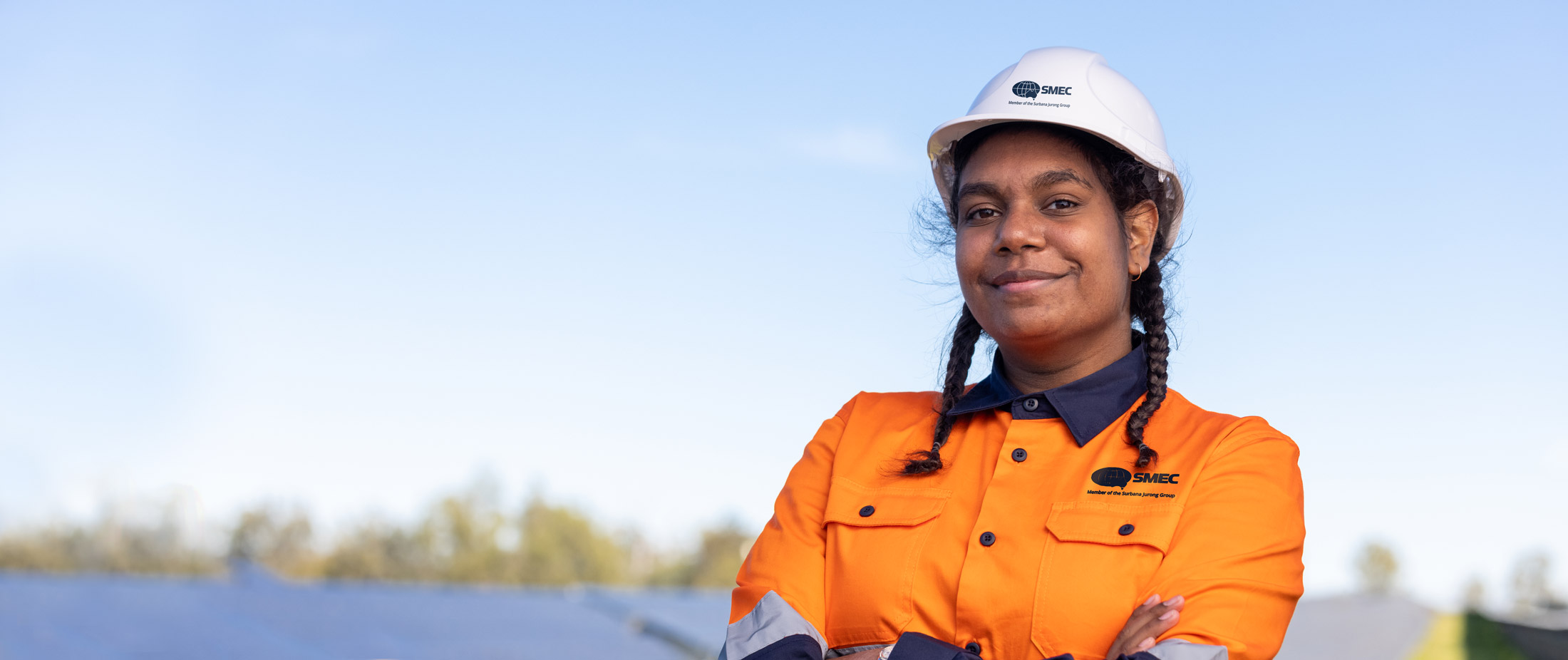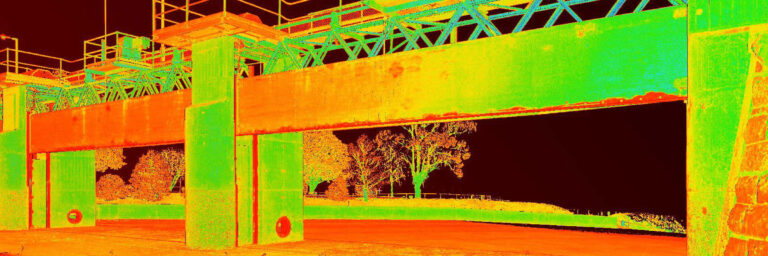

What is your safety philosophy? And why would it be different for different genders?
At SMEC, safety is all about our people. Our people are the core of our offering, so it is crucial that supporting our staff is our first priority whether it be physical or psycho-social risk.
Recognising the different risks that can been experienced by different genders is a key part of the SMEC risk management program, both on-site and/or in the office. Some of these different risks include
- Security risks from access to and from the workplace in remote locations;
- Working alone;
- High physical demands;
- Appropriate amenities;
- Suitability sized and available protect equipment.
We make sure we examine the conscious and unconscious gender bias present in everyday life, by doing this we endeavour to create a work environment that reflects the needs of all.
How does a business need to support its people when it comes to safety?
SMEC is obligated to provide appropriate plant and equipment for tasks performed as well as accessible safety management systems whilst demonstrating and supervising to the expected safe behaviours to ensure a safe workplace for staff, contractors, and visitors.
But beyond that, we are striving to make SMEC an environment where our employees feel wholly safe – where our people feel seen, heard, appreciated, and supported.
Listening to our people is central and we strive to empower our staff to speak openly, generate ideas, and positively influence safety culture.

What does good safety look like and what do we need to do to achieve it?
There is no one answer to what safety success looks like, but it can range from “no incidents and no injuries” to very informative descriptions of what practices, beliefs and knowledge would indication success. Here are some characteristics of safety success.
- Focused
- Transformational
- Involves workers
- Clearly communicated
- Results oriented
- Multi-dimensional
- Integrated
What has SMEC done to address workplace sexual harassment as a safety physical and psycho-social risk?
We have conducted multiple risk assessments in our workplace, with specific focus on areas such as exposure to psycho-social risks in the workplace. One key area identified as a risk is “harmful behaviours” which include:
- Violence and aggression; bullying; harassment including sexual harassment or gender-based harassment, and conflict or poor workplace relationships and interactions.
To address the above factors/risks, we have introduced the following controls:
- Policy statements showing commitment from senior leaders showing support against sexual harassment whether at work or in the domestic home.
- Education of expected behaviours from staff via training programs.
- On-going awareness sessions promoting safer workplaces and expected behaviours.
- Safe/ confidential portals to report harassment concerns without the fear of reprisals.
- Provision of employee assistance programs.
- Access to external support networks.
- Nomination and training of mental health first aiders and safety champions in each office.
- Investigation processes to deal with such reports respecting all parties rights.
You have mentioned psychological and psychosocial safety – can you explain these concepts further please – and what role does an organisation now need to play in this space?
A person conducting a business or undertaking (PCBU) must eliminate psychosocial risks, or if that is not reasonably practicable, minimise them so far as is reasonably practicable. The model WHS Regulations require PCBUs to have regard to all relevant matters when determining what control measures to implement.
A psychosocial hazard is anything that could cause psychological harm (e.g. harm someone’s mental health). Psychosocial hazards can create stress, this can cause psychological or physical harm. While stress itself is not an injury, if someone is stressed often, over a long time, or the level of stress is high, it can cause harm.
Psychological harm may include anxiety, depression, post-traumatic stress disorder and sleep disorders. Physical harm may include musculoskeletal injuries, chronic disease or fatigue related injuries. Common psychosocial hazards at work include:
- job demands
- low job control
- poor support
- lack of role clarity
- poor organisational change management
- inadequate reward and recognition
- poor organisational justice
- traumatic events or material
- remote or isolated work
- poor physical environment
- violence and aggression
- bullying
- harassment, including sexual harassment, and
- conflict or poor workplace relationships and interactions
Empowering our employees to feel seen, seen, heard, appreciated can help to create an environment where psychosocial hazards are minimised. Our leaders and managers are key to unlocking the potential of our people to raise safety concerns, generate ideas and focus on solutions that provide safer outcomes.
At SMEC, we believe the best approach to health and safety is collaboration, we work with our people to continually improve our practices and procedures – ensuring they are people first. Let’s make safety seen this International Women in Engineering Day.
In the rapidly evolving world we live in, engineering plays a pivotal role in addressing global challenges, designing innovative solutions, and creating sustainable development. Women have made significant strides in engineering disciplines, however, there is still work to be done to bridge the gender gap and ensure equal opportunities for all.
Related
insights
 Dohazari to Cox's Bazar Railway project, Bangladesh reaps benefits of site safety culture
Dohazari to Cox's Bazar Railway project, Bangladesh reaps benefits of site safety culture
Health and safety should be an integral part of businesses, of all shapes, and sizes. At SMEC it is imperative that we protect the well-being of people associated with our company, whether on-site or in the office.
 Improving safety and reducing costs with 3D scanners
Improving safety and reducing costs with 3D scanners
Dam safety matters. Dam monitoring plays an essential role in evaluating the structural safety conditions of dams and mitigates against dam breaches occurring.
 Delivering safe, connected communities
Delivering safe, connected communities
Planning and designing a modern road is a complex task that requires innovative designers capable of improving connectivity at an individual and a city scale through effective and sustainable transport solutions.
 International Women in Engineering Day
International Women in Engineering Day
SMEC celebrates some of the incredible talent, and outstanding achievements of our women in engineering. It is with their innovation, dedication and aptitude that SMEC is able to make the positive global impact we are making today, for a better tomorrow. We sat down with our some of our team from around the world to hear their inspirational stories.




